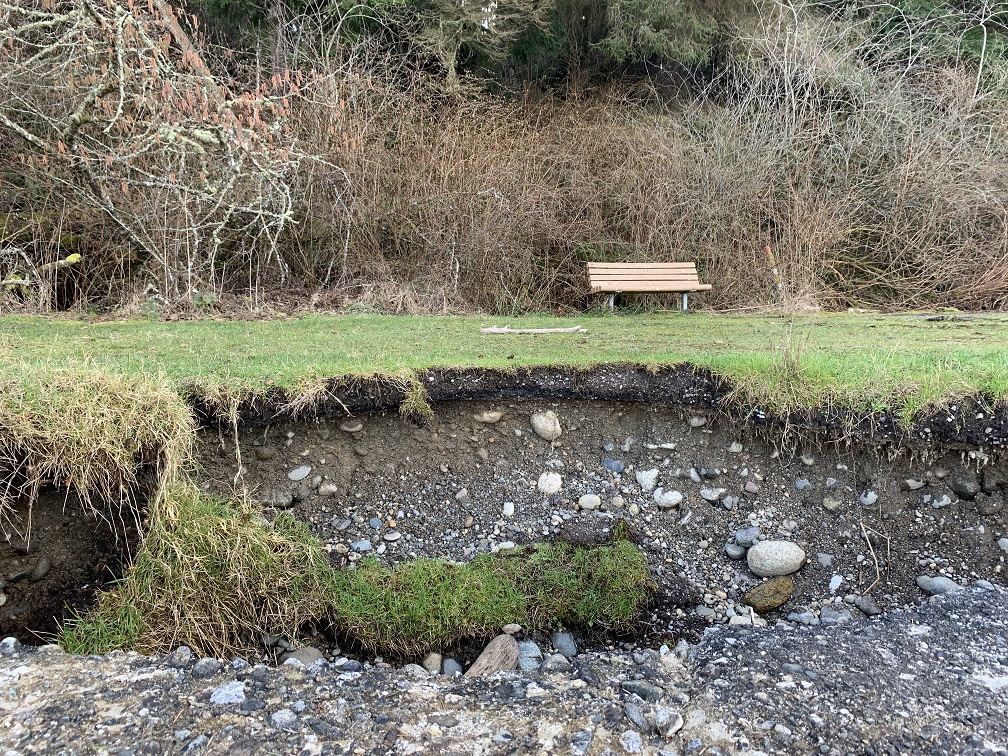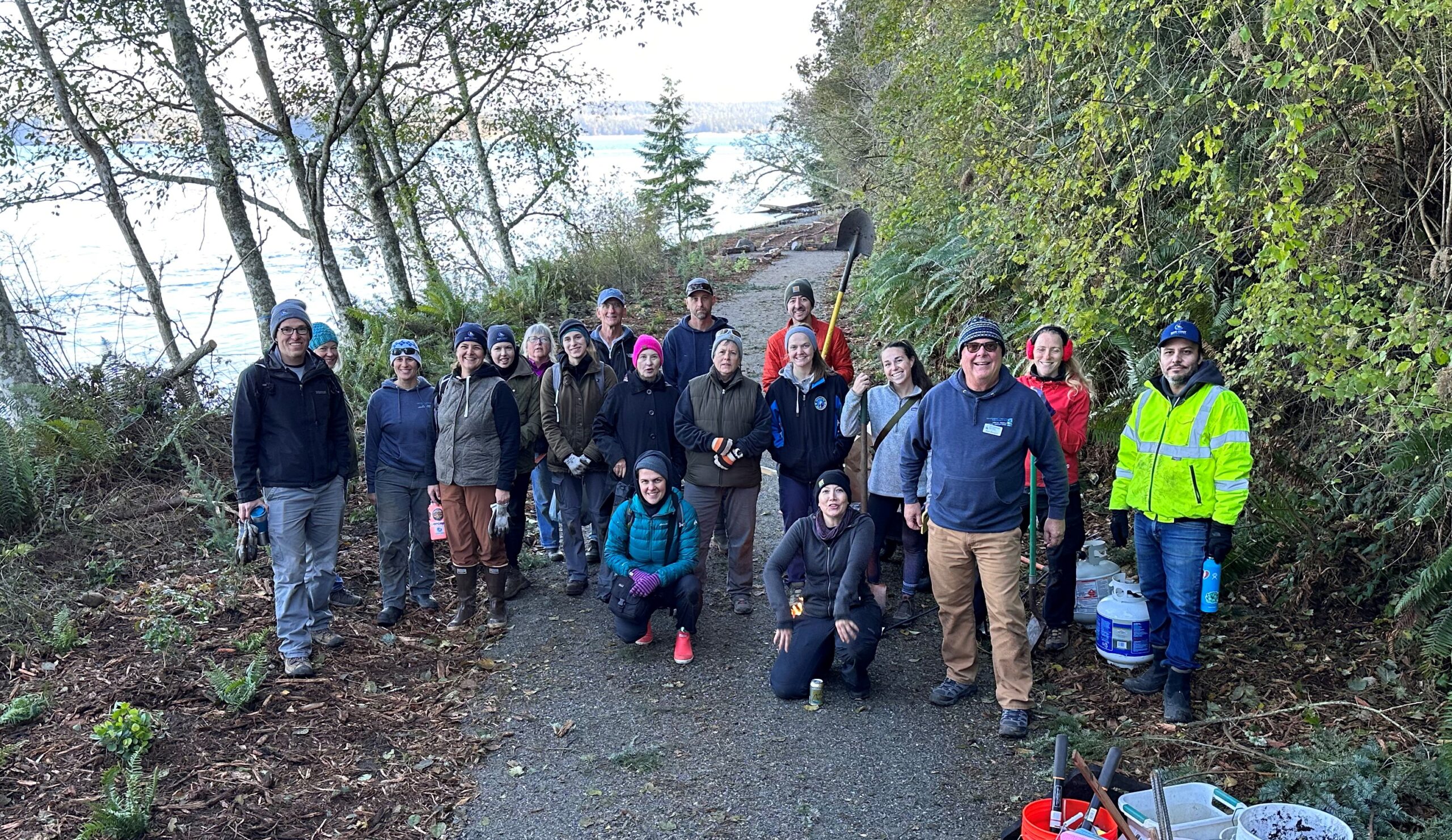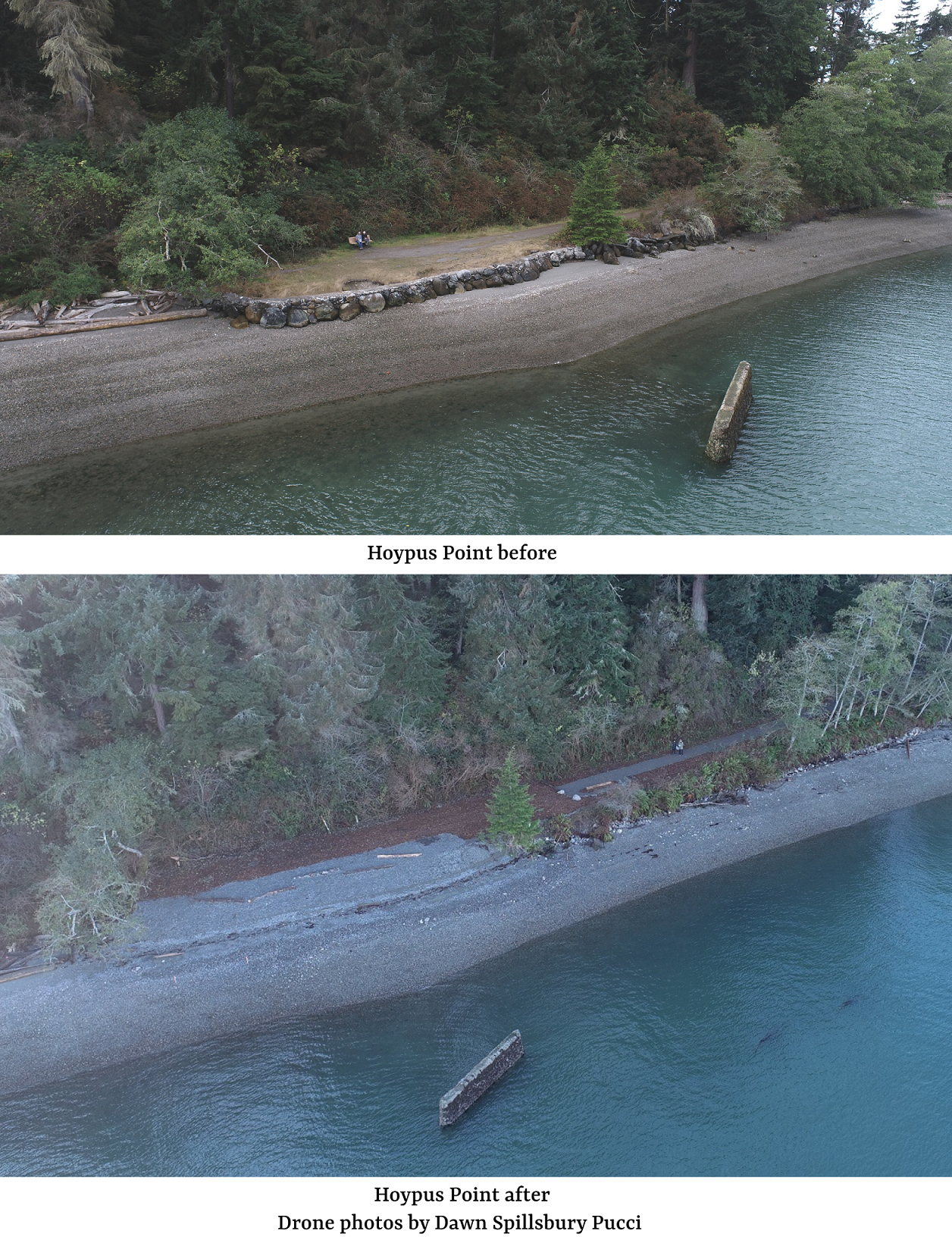Hoypus Point
350 linear feet of shoreline armor and debris was removed from Hoypus Point in November 202 at the north end of Deception Pass State Park near Cornet Bay, restoring nearshore processes and habitat for fish and wildlife while also improving access to the beach.

In the early 1900s, the location was the southern terminus for a ferry that crossed Deception Pass to Yokeko Point on Fidalgo Island. Once the Deception Pass bridge was constructed in 1935 the ferry became obsolete, however some infrastructure from the ferry remained on site.
Shore armor and fill infringed on and bury potential surf smelt and sand lance spawning habitat. Surf smelt and sand lance spawn in the mid to upper reaches of the beaches and are important prey for our migrating salmon in the Whidbey Basin which are critical for the recovery of Southern Resident Killer Whales. Construction was initially delayed in October 2022 when surf smelt spawning was detected by biologists within and adjacent to the restoration area.
Following construction, Island County Marine Resources Committee and community volunteers added 1,300 trees, shrubs, grasses, and perennials to reestablish a marine riparian corridor to benefit salmon, forage fish, and birds. These native trees and shrubs will reestablish shading and stability of the shoreline and will need to be maintained for several years as they grow. Contact us for more information on how to get involved.

The Hoypus Point project is the third phase of nearshore habitat restoration at the Cornet Bay Day Use Site. Click here for more information about the habitat and restoration at Cornet Bay or stop by the park and check out the interpretive signs located near the park shelter.

Project partners / acknowledgements: Washington State Parks (Deception Pass State Park), Island County Marine Resources Committee, Whidbey Island Conservation District, Blue Coast Engineering, and PNW Civil, Inc.
Initial funding for site identification and feasibility was paid for by Puget Sound Partnership, National Fish and Wildlife Foundation, Shell Oil Company, SeaWorld Parks & Entertainment, and the U.S. Fish and Wildlife Service.
Funding to support design, permitting, and construction has been provided by grants from the Washington State Salmon Recovery Funding Board and Department of Fish and Wildlife’s Estuary & Salmon Restoration Program.
